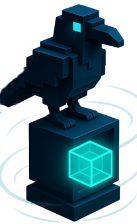What is k Nearest Neighbors
k nearest neighbors is a simple method that predicts using the k most similar past examples. There is no training phase beyond storing data.
Why security teams like it
- Extremely simple and intuitive
- Good teaching baseline to sanity check other models
- Can work for small feature sets where distance is meaningful
Core idea in one line
Similarity votes decide
new sample —> find k closest examples —> vote for class or average for a number
Small security example
Goal suspicious login or normal
Features hour bin, geo distance from last login, device novelty, failed attempt count
How it works look at the k most similar past logins and vote suspicious or normal.
Training workflow
- Engineer low count, well scaled features
- Scale features to comparable ranges
- Choose a distance metric typically Euclidean or cosine
- Tune k with time aware validation
- Pick threshold for action using neighbor vote proportion
Evaluation that matches reality
- Use Precision, Recall, F1, PR AUC
- Validate on future windows to reflect real use
- Slice by user and tenant because identities can dominate neighbors
Overfitting and underfitting
- k too small memorizes noise overfits
- k too large oversmooths underfits
- Fix by tuning k, scaling features, and limiting to a sensible feature set
Common hyperparameters
knumber of neighborsmetricdistance measure Euclidean, cosine, Manhattanweightsuniform or distance weighted votesalgorithmfor nearest neighbor search kd tree, ball tree, brute
Security focused testing checklist
- Ensure feature scaling at train and inference
- Test monotonicity do reasonable changes move neighbors as expected
- Evaluate sensitivity to
kand metric choices - Guard memory and latency budgets nearest neighbor search can be heavy
- Validate on future time slices to avoid optimistic scores
Threats and mitigations
- Feature gaming attacker crafts inputs close to benign neighbors
- Mitigate add robust features, require secondary checks for low margin votes
- Data poisoning attackers insert crafted neighbors into the store
- Mitigate curate the memory, age out data, verify labels
- Concept drift old neighbors become stale
- Mitigate rolling windows and periodic rebuilds
Takeaways
kNN is a simple, teachable baseline great for small, well scaled feature spaces. Use it to sanity check pipelines, but prefer forests or boosting for scale and robustness on complex security data.
---
[Original Source](_No response_)

